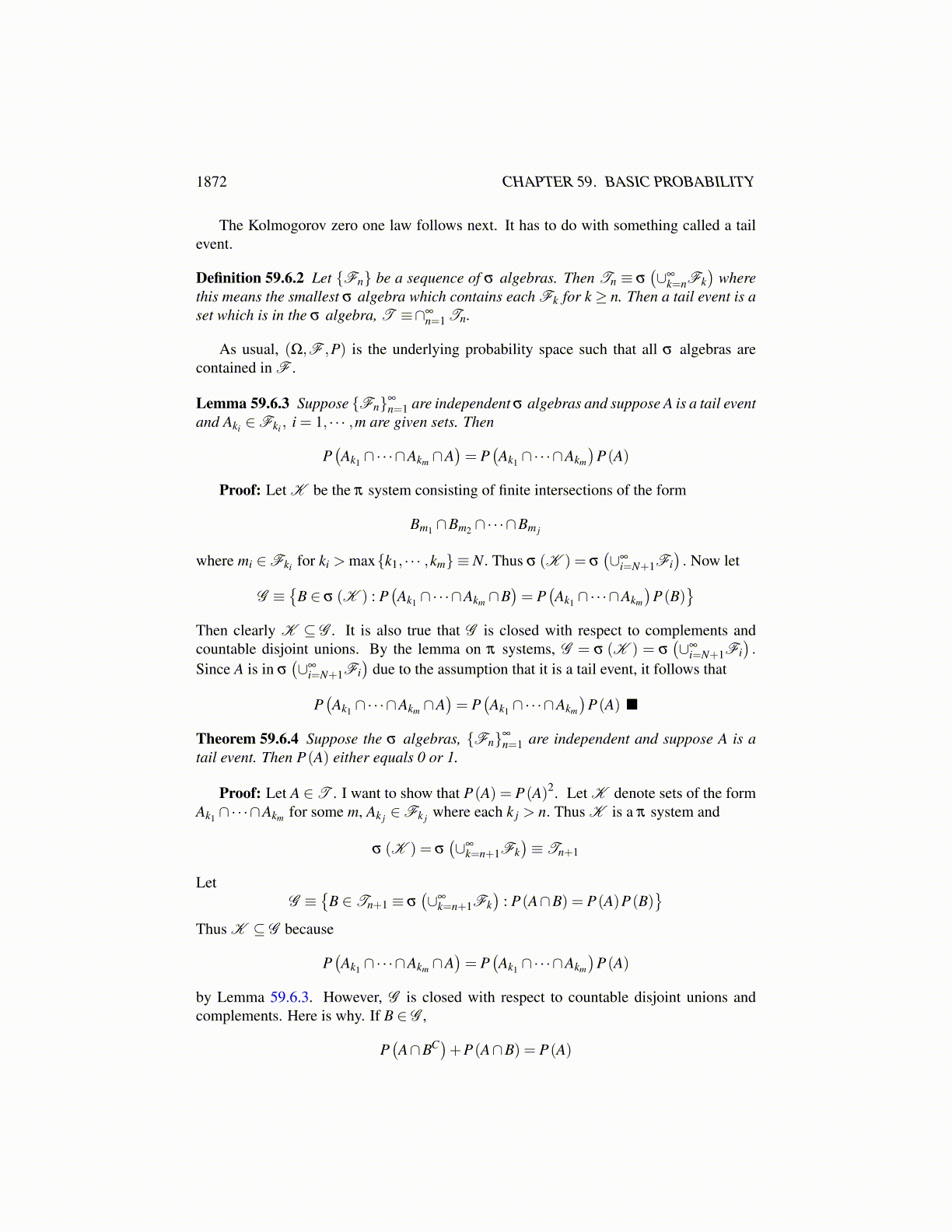
1872 CHAPTER 59. BASIC PROBABILITY
Proof: First note that X−1 (σ (K )) is a σ algebra which contains X−1 (K ) and so itcontains σ
(X−1 (K )
). Thus
X−1 (σ (K ))⊇ σ(X−1 (K )
)Now let
G ≡{
A ∈ σ (K ) : X−1 (A) ∈ σ(X−1 (K )
)}Then G ⊇K . If A ∈ G , then
X−1 (A) ∈ σ(X−1 (K )
)and so
X−1 (A)C = X−1 (AC) ∈ σ(X−1 (K )
)because σ
(X−1 (K )
)is a σ algebra. Hence AC ∈ G . Finally suppose {Ai} is a sequence
of disjoint sets of G . Then
X−1 (∪∞i=1Ai) = ∪∞
i=1X−1 (Ai) ∈ σ(X−1 (K )
)again because σ
(X−1 (K )
)is a σ algebra. It follows from Lemma 12.12.3 on Page 329
that G ⊇ σ (K ) and this shows that whenever
A ∈ σ (K ) ,X−1 (A) ∈ σ(X−1 (K )
).
Thus X−1 (σ (K ))⊆ σ(X−1 (K )
).
With this lemma, here is the desired result about independent random variables. Essen-tially, you can reduce to the case of random vectors having values in Rn.
59.5 Reduction To Finite DimensionsLet E be a Banach space and let g ∈ (E ′)n . Then for x ∈ E, g◦x is the vector in Fn whichequals (g1 (x) ,g2 (x) , · · · ,gn (x)).
Theorem 59.5.1 Let Xi be a random variable having values in E a real separable Banachspace. The random variables {Xi}i∈I are independent if whenever
{i1, · · · , in} ⊆ I,
mi1 , · · · ,min are positive integers, and gmi1, · · · ,gmin
are respectively in
(M)mi1 , · · · ,(M)min
for M a dense subspace of E ′,{
gmi j◦Xi j
}n
j=1are independent random vectors having
values in Rmi1 , · · · ,Rmin respectively.